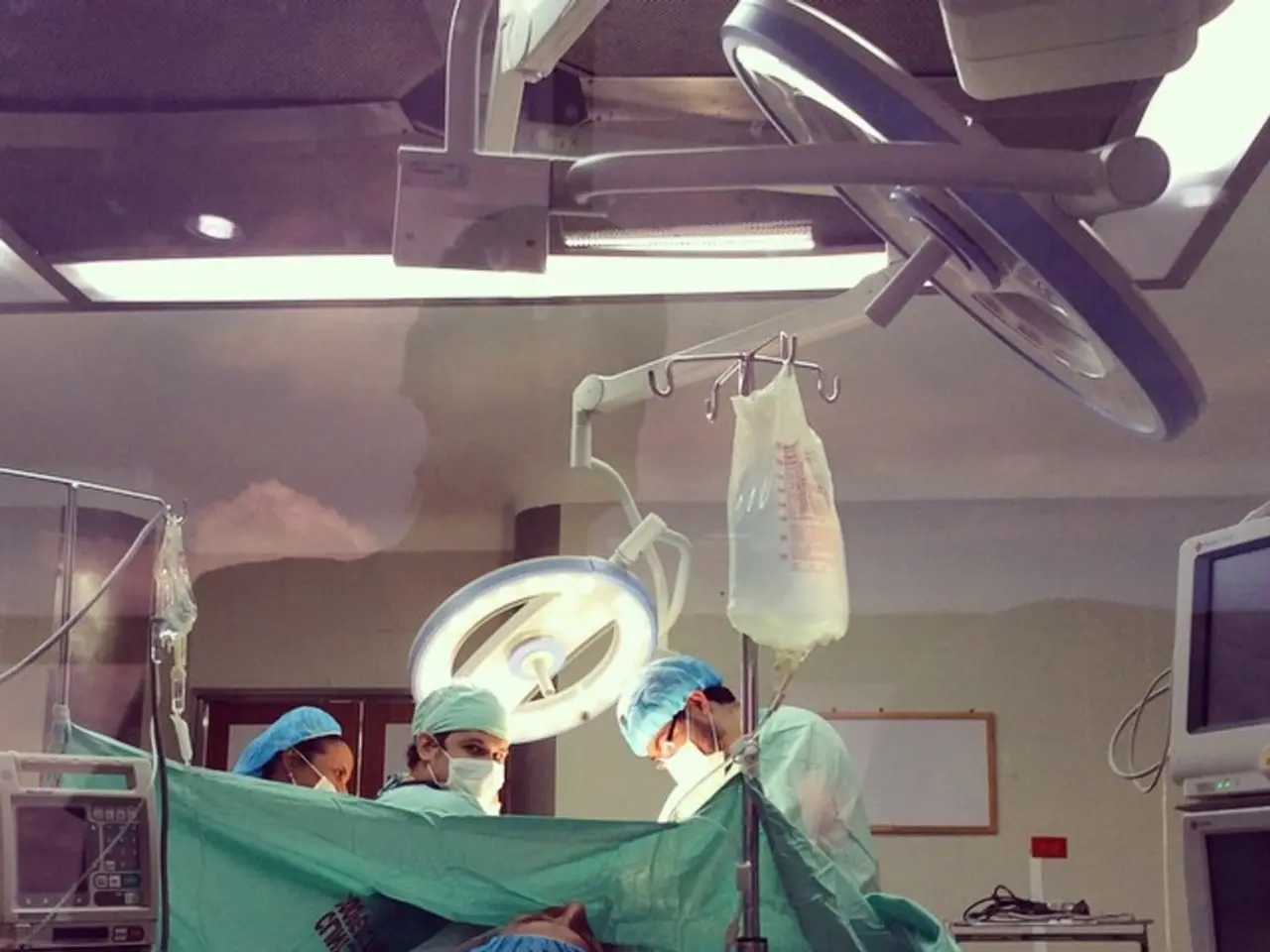US robot autonomy demonstrated in gallbladder surgery, marking a significant advancement in the field of medical procedures
The SRT-H surgical robot, developed by scientists from Johns Hopkins University, has made a significant stride in the field of autonomous surgical systems. This innovative robot, a marked advancement over previous models, demonstrates impressive adaptability, precision, and autonomous decision-making capabilities.
One of the key features of the SRT-H robot is its adaptability. Unlike earlier models that required highly controlled environments and predetermined plans, SRT-H can adapt to individual anatomical features and unexpected conditions in real-time. This includes changes in tissue appearance or initial positioning, making it a major leap forward [1][2].
The precision of the SRT-H robot is another standout feature. During testing, the robot achieved a 100% success rate in autonomous gallbladder removal, a level of precision comparable to expert surgeons. While it took longer to perform than human surgeons, the precision demonstrated by SRT-H is notable [1][4].
Autonomous decision-making is another area where SRT-H excels. The robot integrates AI models similar to those used in ChatGPT, allowing it to respond to spoken commands and learn from real-time feedback. This capability enhances its ability to make autonomous decisions during surgery, setting it apart from previous models that relied heavily on pre-programmed plans [2][4].
During the test, SRT-H completed 17 key stages of the operation, including identifying arteries and ducts, and precise tissue incision, with 100% accuracy [3]. However, it's important to note that robots like SRT-H are not designed to replace humans in all aspects of surgery. They cannot handle unpredictable situations like sudden bleeding [5][6].
The development of SRT-H has already won the prestigious RBR50 Robotics Innovation Award. Scientists plan to expand the robot's capabilities and teach it other surgeries. AI, like the one used in SRT-H and ChatGPT, can be trained on videos of real surgeries with comments from experienced surgeons [2].
However, there are concerns about the potential for doctors to try to 'cheat' the system. Additionally, AI may need ongoing correction to function effectively [7]. People can assist robots in operating rooms, as the work is physically, mentally, and psychologically demanding for humans [6].
In conclusion, the SRT-H model represents a significant milestone towards the clinical deployment of autonomous surgical systems. Its ability to adapt, its precision, and its autonomous decision-making capabilities showcase the potential of AI in real operating rooms. As the technology continues to evolve, it promises to revolutionise the field of surgery.
References: [1] https://www.jhuapl.edu/our-work/areas-of-focus/space-exploration/missions/srt-h [2] https://www.jhuapl.edu/our-work/areas-of-focus/space-exploration/missions/srt-h/technology [3] https://www.jhuapl.edu/our-work/areas-of-focus/space-exploration/missions/srt-h/gallbladder-removal [4] https://www.jhuapl.edu/our-work/areas-of-focus/space-exploration/missions/srt-h/precision [5] https://www.jhuapl.edu/our-work/areas-of-focus/space-exploration/missions/srt-h/human-collaboration [6] https://www.jhuapl.edu/our-work/areas-of-focus/space-exploration/missions/srt-h/safety [7] https://www.jhuapl.edu/our-work/areas-of-focus/space-exploration/missions/srt-h/ai-challenges
The SRT-H surgical robot, a product of Johns Hopkins University science, showcases its potential in the health-and-wellness sector, particularly in the field of therapies-and-treatments. This robot, with its advanced autonomous decision-making capabilities, leverages AI technology to deliver precision in gallbladder removal procedures, rivaling expert surgeons.




